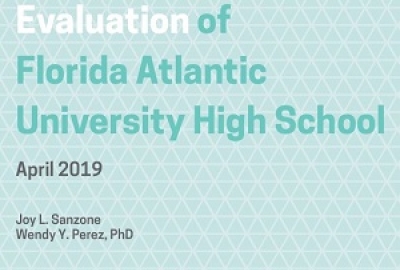
By Joy Sanzone
When Robert Smith made headlines promising to repay the student loan debt of nearly 400 graduates of Atlanta’s Morehouse College, he brought the issue of rising college costs back to the forefront of the national conversation.
Nationally, there has been a growing outcry for greater college access for all students. Policy-makers have put forth plans to eliminate or greatly reduce the out-of-pocket expenses borne by students and their families. And why not? The cost of attending a public college ballooned from about $7,300 a year in 2000 to $17,000 a year in 2017 (in 2017-adjusted dollars).
Record numbers of students are taking out loans to finance their education, and record numbers of students are defaulting on those loans. For the most economically vulnerable students in the U.S., college has become unattainable. Those who do attend college are often saddled with crippling debt well into their adult lives, impacting decisions later in life, from what type of job to take, where to live and buy a home to their ability to save for retirement. Educational policies that support free or low-cost college access for all students are of critical importance.
The Center for Policy, Research, and Evaluation at NYU Metro Center recently partnered with Florida Atlantic University High School to conduct an evaluation of their concurrent enrollment program, the only program in the nation in which students work towards a high school diploma and a bachelor’s degree simultaneously. We wanted to know more about how this program serves students, how students experience the program, and how this schooling model might be expanded to offer credit-earning opportunities for more students for free.
Dual enrollment programs aren’t new. However, the vast majority of these programs limit who can benefit, place caps on how many credit hours a student may earn, or charge enrollment fees. Florida Atlantic University High School eliminates some of the barriers common to other dual enrollment programs: There is no cap on credit hours; there is no cost for tuition or textbooks; and admission is not restricted to students from specific middle schools.
The evaluation found both benefits and drawbacks to this unique educational model. Students in the program were academically successful, indicating that high school students can succeed and thrive with advanced coursework and on a university campus. This success did not come without challenges, as students in the program also reported higher levels of mental health issues such as depression and anxiety than a nationally representative sample of college students.
Of course, the students of Florida Atlantic University High School, while economically diverse, comprise a unique and somewhat privileged sample. FAUHS students are heavily screened, share both strengths and interests in STEM, and have enjoyed histories of success in school.
In spite of the uniqueness of the student population, the evaluation left us with many questions: How might this model support a broader range of students, particularly linguistically diverse students and students with special needs? How do we ensure that accelerated learning opportunities are available to students of all academic abilities, and not just students who have histories of school success? Perhaps the most important question is, how can a free college model that serve all students be taken to scale?
While it does not answer these questions, this evaluation begins an important conversation, providing initial evidence about how a free college program like FAUHS might increase college access for economically less advantaged students.
The full results of the evaluation can be found in our report.

